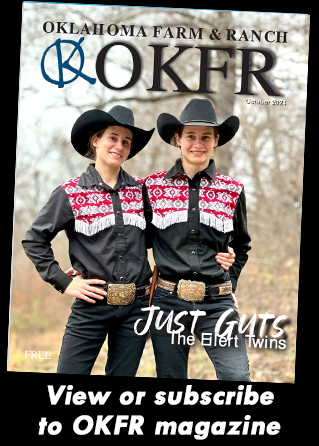Outdoors
Faith, Family, and the Great Outdoors
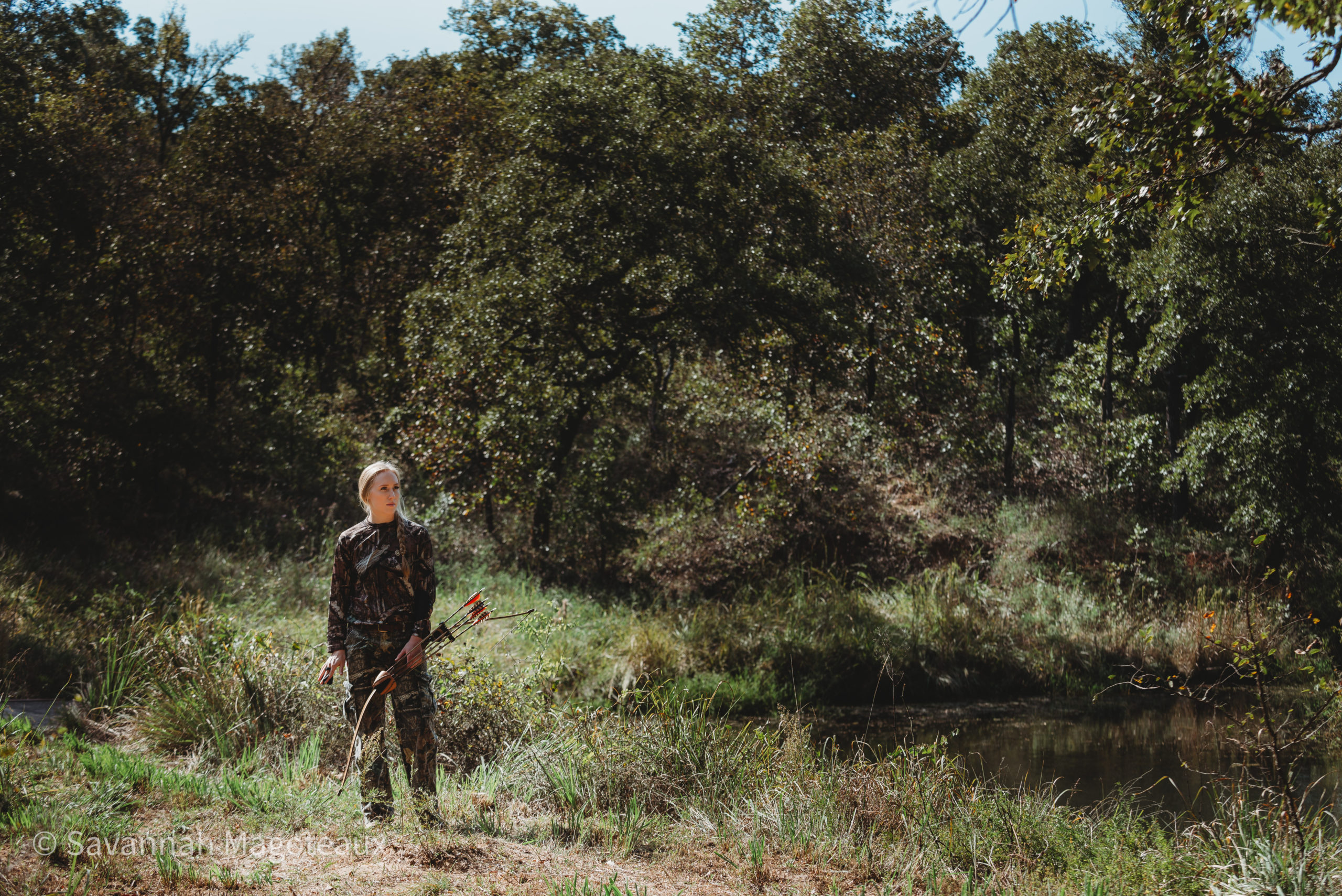
Walking along the paths cut through her family’s land, Rebecca Stevens reflects on how lucky she was. Raised in a beautiful home with scenic land on a quite road in Overbrook, Okla., she grew up with an appreciation for all things outdoors. Hunting, fishing, and camping are just a few of the things the 21-year-old nursing student enjoys, and she has spent her life becoming a good steward of the land and its inhabitants.
Her faith in God is also of utmost importance. “Church is a particularly important aspect of our lives, and I was raised going to church every Sunday. The few times we missed was because of hunting,” she said with a laugh.
“It was a wonderful way to grow up,” she recalled. “My sister and I would come out and spend the days here in the woods playing. We had all this room to run and play and hide. I was pretty much raised hunting, fishing, and camping.”
At first glance, Rebecca doesn’t appear to be the outdoors’ type, if there is such a thing. Tall and lean, she looks more apt to be in the pages of a magazine than in a deer blind. Those assumptions are quickly belied by a deep knowledge, love, and appreciation for nature.
Getting Started
Rebecca comes by her love of wildlife honestly. Her father, Russell Stevens, has been a strategic consultation manager and a wildlife and range consultant in the producer relations program at the Noble Research Institute for more than 30 years. Her grandfather Larry Stevens, affectionately nicknamed Papa, built recurve bows for years. “Papa built recurves, and then my dad started building longbows,” Rebecca shared. “We will go to traditional archery tournaments around McAlester and Stratford and practice all year long to get ready for hunting season. My mom is an English teacher, but she enjoys it, too.”
Rebecca reminisces about the first time her father let her sit in a deer stand by herself; a morning that was memorable for a couple reasons. “I was eight or nine. It was awesome. He walked me to my stand and set me up there and made sure I was good. He walked across the property to sit in a different stand, so I wasn’t totally by myself. I felt pretty independent.” She laughed and added, “I just remember shooting a doe and losing a tooth the same morning.”
While Rebecca doesn’t build the bows herself, she still regularly finds herself partaking in the process. “It’s pretty neat to watch. Dad will bring the bows in the house and show us them throughout the process. He’ll show us different woods for limbs and risers and see what combinations look good to us, and it’s pretty fun,” she shared.
While many people enjoy hunting with a compound bow, Stevens enjoys the challenge of the longbow, which is basically, “Just a stick and string,” she said with a laugh. “When you’re pulling back that weight, you have to hold it the whole time, and you don’t have any sites.”
Rebecca has taken several deer with the longbow, but there are a few that stick out in her mind. Most memorable, perhaps, was her first deer taken with the longbow at age 15. She was on her grandmother Jeanette’s property, while her father was away on a hunt in McAlester. “It’s kind of hard to describe, but I can remember it happening and was over in just a couple minutes. It is so vivid in my mind,” she shared. “He came in kind of back behind me to my left and was only about 10 yards away. He only had three points on one side, and a spike on the other. He was kind of cutting across angling away from me. I remember placing the arrow right at the last rib, and angling it forward.”
After releasing the arrow, she knew she’d taken a good shot, but because of the deep brush she quickly lost sight of the buck. “I remember calling my dad, and he told me he just knew that my first deer I shot with a recurve was going to be when he was away. It was his last day there, though, so he told me to just wait and he’d come home to help me track it,” she said. “I went back to my grandma’s house and sat there and waited what seemed like forever. We were both really excited. After I shot him, I had to sit down because I was shaking so hard. I couldn’t believe it happened.”
Hunting is a big part of Rebecca’s life, but it is not just about sport. “Some of the best memories I have had with my dad have been in the outdoors. It’s always been a special time for us to bond,” she said. “Not just that, but hunters are the biggest conservation team in the United States, and so we can manage the deer, and wildlife in general, by hunting. It’s very important to control the population.”
In addition, the Stevens family gets to enjoy the bounty of food that comes from hunting. “We hardly waste an ounce of meat,” Rebecca shared. “We actually process all of our animals ourselves, and my dad has taught me a lot about how to do that. We use as much as we can.”
Choosing Nursing
With her passion for the outdoors, Rebecca had planned to find a career that would foster that love, even working several summers at the Noble Research Institute as a hand. “I just mowed, painted fence, hauled hay, and did anything to do with keeping the outside running,” she recalled.
Those plans changed her senior year, when Russell became very sick. “He was diagnosed with cancer, and I’ll never forget those nurses and how well they took care of my dad and my family and how they advocated for him. We also had a nurse in our family, Michelle, who I think help saved his life. My mom had been on the phone with her asking about what could possibly be wrong with him,” Rebecca explained. “Michelle was the one who got in touch with the oncologist at Mercy OKC, who was on vacation at the time, but went ahead and ordered blood work for dad and reviewed it while on vacation. Michelle told us tog et our bags packed because the city would be calling to tell us we needed to get up there quickly.”
“I figured I would really enjoy being in that profession and possibly saving lives. Those great nurses made a lasting impression on me,” she said.
The nursing program at East Central University is top-notch, and the end of school is in sight for Rebecca, who is set to graduate at the end of the spring semester in 2021. “When COVID-19 hit, we had to stop right after spring break, adjust, and do our school and clinicals online. They did the best they could to get experience for us, but this semester we’re pretty limited to the places that will allow students. Still, they are working to make sure we get our experience which will allow us to graduate on time,” she explained.
In addition to school, Rebecca works as a nurse’s aid at Mercy in Ardmore. “We don’t have as many aids right now because of COVID-19, so I stay pretty busy,” she said. “I haven’t decided on a specific direction I want to go with nursing, but I’m excited to be in a field with so many options.”
Walking along the paths cut through her family’s land, Rebecca Stevens reflects on how lucky she was. Raised in a beautiful home with scenic land on a quite road in Overbrook, Okla., she grew up with an appreciation for all things outdoors. Hunting, fishing, and camping are just a few of the things the 21-year-old nursing student enjoys, and she has spent her life becoming a good steward of the land and its inhabitants.
Her faith in God is also of utmost importance. “Church is a particularly important aspect of our lives, and I was raised going to church every Sunday. The few times we missed was because of hunting,” she said with a laugh.
“It was a wonderful way to grow up,” she recalled. “My sister and I would come out and spend the days here in the woods playing. We had all this room to run and play and hide. I was pretty much raised hunting, fishing, and camping.”
At first glance, Rebecca doesn’t appear to be the outdoors’ type, if there is such a thing. Tall and lean, she looks more apt to be in the pages of a magazine than in a deer blind. Those assumptions are quickly belied by a deep knowledge, love, and appreciation for nature.
Getting Started
Rebecca comes by her love of wildlife honestly. Her father, Russell Stevens, has been a strategic consultation manager and a wildlife and range consultant in the producer relations program at the Noble Research Institute for more than 30 years. Her grandfather Larry Stevens, affectionately nicknamed Papa, built recurve bows for years. “Papa built recurves, and then my dad started building longbows,” Rebecca shared. “We will go to traditional archery tournaments around McAlester and Stratford and practice all year long to get ready for hunting season. My mom is an English teacher, but she enjoys it, too.”
Rebecca reminisces about the first time her father let her sit in a deer stand by herself; a morning that was memorable for a couple reasons. “I was eight or nine. It was awesome. He walked me to my stand and set me up there and made sure I was good. He walked across the property to sit in a different stand, so I wasn’t totally by myself. I felt pretty independent.” She laughed and added, “I just remember shooting a doe and losing a tooth the same morning.”
While Rebecca doesn’t build the bows herself, she still regularly finds herself partaking in the process. “It’s pretty neat to watch. Dad will bring the bows in the house and show us them throughout the process. He’ll show us different woods for limbs and risers and see what combinations look good to us, and it’s pretty fun,” she shared.
While many people enjoy hunting with a compound bow, Stevens enjoys the challenge of the longbow, which is basically, “Just a stick and string,” she said with a laugh. “When you’re pulling back that weight, you have to hold it the whole time, and you don’t have any sites.”
Rebecca has taken several deer with the longbow, but there are a few that stick out in her mind. Most memorable, perhaps, was her first deer taken with the longbow at age 15. She was on her grandmother Jeanette’s property, while her father was away on a hunt in McAlester. “It’s kind of hard to describe, but I can remember it happening and was over in just a couple minutes. It is so vivid in my mind,” she shared. “He came in kind of back behind me to my left and was only about 10 yards away. He only had three points on one side, and a spike on the other. He was kind of cutting across angling away from me. I remember placing the arrow right at the last rib, and angling it forward.”
After releasing the arrow, she knew she’d taken a good shot, but because of the deep brush she quickly lost sight of the buck. “I remember calling my dad, and he told me he just knew that my first deer I shot with a recurve was going to be when he was away. It was his last day there, though, so he told me to just wait and he’d come home to help me track it,” she said. “I went back to my grandma’s house and sat there and waited what seemed like forever. We were both really excited. After I shot him, I had to sit down because I was shaking so hard. I couldn’t believe it happened.”
Hunting is a big part of Rebecca’s life, but it is not just about sport. “Some of the best memories I have had with my dad have been in the outdoors. It’s always been a special time for us to bond,” she said. “Not just that, but hunters are the biggest conservation team in the United States, and so we can manage the deer, and wildlife in general, by hunting. It’s very important to control the population.”
In addition, the Stevens family gets to enjoy the bounty of food that comes from hunting. “We hardly waste an ounce of meat,” Rebecca shared. “We actually process all of our animals ourselves, and my dad has taught me a lot about how to do that. We use as much as we can.”
Choosing Nursing
With her passion for the outdoors, Rebecca had planned to find a career that would foster that love, even working several summers at the Noble Research Institute as a hand. “I just mowed, painted fence, hauled hay, and did anything to do with keeping the outside running,” she recalled.
Those plans changed her senior year, when Russell became very sick. “He was diagnosed with cancer, and I’ll never forget those nurses and how well they took care of my dad and my family and how they advocated for him. We also had a nurse in our family, Michelle, who I think help saved his life. My mom had been on the phone with her asking about what could possibly be wrong with him,” Rebecca explained. “Michelle was the one who got in touch with the oncologist at Mercy OKC, who was on vacation at the time, but went ahead and ordered blood work for dad and reviewed it while on vacation. Michelle told us tog et our bags packed because the city would be calling to tell us we needed to get up there quickly.”
“I figured I would really enjoy being in that profession and possibly saving lives. Those great nurses made a lasting impression on me,” she said.
The nursing program at East Central University is top-notch, and the end of school is in sight for Rebecca, who is set to graduate at the end of the spring semester in 2021. “When COVID-19 hit, we had to stop right after spring break, adjust, and do our school and clinicals online. They did the best they could to get experience for us, but this semester we’re pretty limited to the places that will allow students. Still, they are working to make sure we get our experience which will allow us to graduate on time,” she explained.
In addition to school, Rebecca works as a nurse’s aid at Mercy in Ardmore. “We don’t have as many aids right now because of COVID-19, so I stay pretty busy,” she said. “I haven’t decided on a specific direction I want to go with nursing, but I’m excited to be in a field with so many options.”
Read more about Rebecca in the November 2020 issue of Oklahoma Farm & Ranch.
Outdoors
The Rise of the Quail
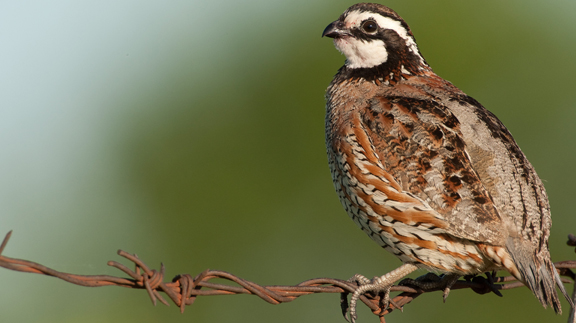
By Laci Jones
Quail hunting is a long-standing tradition in Oklahoma. Unfortunately, many Oklahomans have seen fewer quail in the state throughout the past few decades.
“The decline has been throughout the United States with different species of quail,” said Scott Cox, Oklahoma Department of Wildlife Conservation senior upland game biologist.
However, quail numbers have been on the rise in recent years in Oklahoma, according to Cox.
Two quail species reside in Oklahoma: northern bobwhite and scaled. The scaled quail is mainly found in the panhandle and the extreme western part of the state, while the northern bobwhite is found statewide.
The scaled quail, also known as blue quail, can be identified by its pale gray plumage. This medium-sized bird has a bushy white crest and a scaled pattern over its neck, chest and belly.
The northern bobwhite quail are small and plump. The males are chestnut, brown and white with a white throat and black plumage on their head. Similar to the males, the female northern bobwhite is a reddish color with a buffy throat and eyebrow.
“When we did research in the ‘90s, it was thought that quail stayed within a 40-acre area their whole life,” Cox said.
Cox and other researchers with ODWC and Oklahoma State University tracked quail as technology advanced. Using radio transmitters, the researchers found that quail move several miles in the spring and fall shuffles. Spring shuffle is the period where the birds come out of their coveys in the spring, he explained.
The fall shuffle is when birds mix and match coveys after nesting season. This usually occurs from mid-September to mid to late November. Birds in the fall have been recorded by radio-collaring to move several miles, 3 to 50 miles to be exact, he added.
“The males will move a little bit farther in the spring,” Cox said. “But, it is not uncommon for the hens to move as far as 15 to 20 miles sometimes.”
Cox said many different dynamics have impacted quail numbers including dramatic changes to the environment. Beginning in the ‘70s, urban expansion, small farms going out of production and the introduction of exotic grasses caused quail numbers to decline, he said.
“The biggest decline by far has been the habitat factor,” Cox said. “Quail are getting on islands in some parts of the state.”
Quail are a shrub forb native-grass obligate, he said. Quail require a mixture of grasses, weeds and shrubs.
“To have good numbers of quail like we did this year in the western part of Oklahoma, they have to have large expansions of native grasses and shrub components quail can utilize,” Cox said.
Quail favor Oklahoma-native grasses including little bluestem, big bluestem, switchgrass and Indian grass. The grasses are mixed with weeds like ragweed, sunflower and pigweeds as well as small, mid-range shrubs like sand plums, skunkbrush and wild rose.
“The worst thing for quail is a monoculture of grasses,” he explained. “They require a lot of diversity for their diet and for thermal cover and nesting cover.”
Farmers and ranchers across the state spray for weeds and introduce new grasses, Cox explained.
For example, farmers and ranchers are planting Bermuda grass and fescue for cattle grazing or hay in the northeast part of the state, Cox explained. However, this is also a problem statewide, he added. The western part of the state does not have the Bermuda grass or fescue, but grasses like weeping lovegrass, plains blustem and old world bluestem are introduced.
“The urban sprawl has also taken some of the better habitat and changed over into timber stands or cleared for monoculture type areas,” Cox said.
In the last 20 to 25 years, housing developments have sprung up in Tulsa, Oklahoma City, and other large towns across the state, which is eliminating or changing the dynamics of their preferred habitat. However, quail can be found in those fragmented segments if large enough acreage is available, he added.
Cox said the lack of prescribed burning on the landscape has also had a negative impact on quail numbers.
“Quail are an early-successional type of animal,” he explained. “What pops up in that first year after a burn are weeds and forbs, which are ideal feeding locations for quail.”
The second factor that affects quail is weather conditions, which goes hand-in-hand with habitat loss, Cox said. Weather conditions like hot, dry summers are not helpful for quail reproduction, he explained.
Cox became the senior upland game biologist within the last three years, when Oklahoma was coming out of the drought. He said hunter numbers and quail numbers were also at an all-time low.
“When we had the drought, it got so hot that the hens stopped nesting in the heat of the summer,” he explained. “If you have these mild summers like we have had in recent years— the wetter, cooler summers, that is the best conditions for birds to have good success to raise a lot of birds.”
Quail number and hunter numbers have doubled each year since the drought ended in June 2013, Cox said. Based on roadside surveys conducted in Aug. and Oct., quail numbers have increased almost 60 percent from 2014.
“Western Oklahoma is the area in the state that has the best population of birds,” Cox said.
The northwest region showed a 101 percent increase, while the southwest region showed a 78.4 percent increase compared to 2014.
Some parts of northeast and southeast Oklahoma have seen an increase in quail numbers, but he said it is not a dramatic increase like in the northwest and southwest regions.
However, quail numbers in the south-central and north-central parts of the state have declined the past couple of years compared to the other regions, Cox said. Based on the roadside surveys, the north-central and south-central regions showed an 18 and 83 percent decline, respectively.
“We haven’t pin-pointed exactly what is going on in the south-central part of the state besides habitat loss, invasion of eastern red cedar and bad fragmentation,” Cox explained. “The south-central region is not quite a bottleneck, but quail have a hard time moving or shuffling from one area to another.”
Cox said he expects quail numbers to fluctuate throughout the years, especially when Oklahoma has very hot and dry summers. However, ODWC and OSU continue to work together on different research projects including quail nest structures, aflatoxins in seeds, insect productions, aerial predators in western Oklahoma and other environmental impacts.
The research conducted by ODWC and OSU helps give landowners information to best manage their property. A common mistake landowners make is over or under grazing along with the lack of prescribed burning, Cox said. Poor land management can have a negative impact on the quail habitat, he added.
“If it looks like a golf course on someone’s property, then it’s not going to be conducive for quail,” he said. “Grazing is great as long as it’s done the right way.”
The National Resources Conservation Services can help adjust a landowner’s grazing rates to be more productive for cattlemen.
“The landowner has to make a living,” Cox said, “but, if you can try and help them balance property and not overgraze or under graze, and put prescribed burning in the picture, they can be productive on a piece of property as long it has native structure.”
The ODWC has wildlife technical assistance programs for landowners including wetland, habitat and quail restoration program, he said. Private land biologists can assess property to give management recommendations depending on the landowners’ needs.
“It’s not just quail,” he added. “These management programs can help other non-game species like monarch butterflies and honeybees.”
For more information on ODWC technical assistance programs, visit wildlifedepartment.com.
This article originally appeared in the February 2016 issue of Oklahoma Farm & Ranch.
Outdoors
Bumble bees, hornets and wasp… oh my!
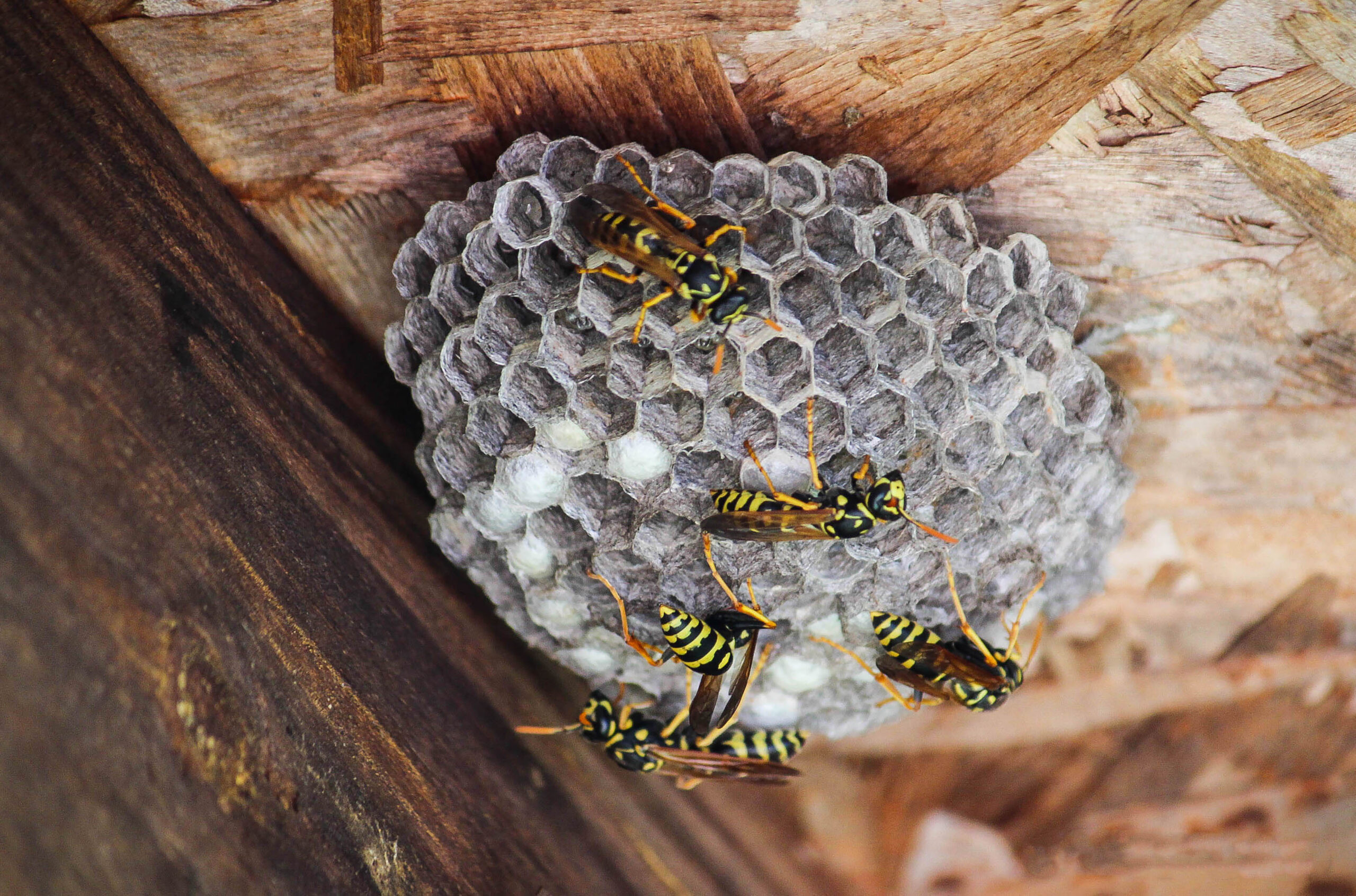
By Andy Anderson
It’s August, which means hunting season is right around the corner. Hunters will soon begin to venture back into the woods to start prepping. Part of this annual ritual is checking out the deer stand, camp area and to getting things cleaned up. This is dangerous and will make you scream for your mamma if you are not prepared!
A few weeks ago I was clearing some fence line out. I had just cut the wire and kicked the wire fence to push it out of the vegetation and away from the T-post. It was then I realized I had just entered into a very painful situation. Now, I’ve been stung by honey bees, wasp, hornets, ground hornets and more, but what I had just angered was unlike anything I had ever experienced.
As I stepped back to move down to the next post, I heard a buzzing sound and the all too familiar bug flying around my face. I gave a quick swat of a hand, a swat that seemed to kick it all off. All of a sudden, BAMM! Before my mind could catch up and process what was happening, I had been hit four or five times in the head. As I turned to run, two more hit me in the back and right above my belly button.
I felt like I got a little distance from the attackers, but as I turned to check my six wounds, I see this black mass emerging from the ground, forming into a ball. I pick up the pace. I am digging in with each step in near panic, wanting to scream in fear of the pending pain that’s about to rain down me. As I am looking back, running as hard as I can at the moment, I trip. My combat training kicks in: I go with the fall, roll out left and pop up quick to get back on my feet. BAMM! One more hits me right between the shoulder blades.
I slide around the front of the truck like Bo Duke, grab the driver’s door handle and jump in. A dirty little aerial assassin followed me into the truck! I jump out quick; it follows me out. I jump back in.
As I sit there, covered in sweat and dirt, the pain starts to radiate throughout my body, specifically my head. I had been stung at least nine times; six of the most painful were in the back of my head. My belly was on fire! As I am catching my breath, trying to think of my next move, I look up. Hundreds, if not thousands of those black and yellow angry bumble bees were swarming my truck. I couldn’t believe it! They were literally ramming the windows, –you could hear each impact.
As the pain sets in I begin to develop a sense of a need to retaliate. As soon as it was safe to do so, I jump into my cabbed skid steer equipped with the equivalent of a brush hog. I shred the area where I thought they emerged from. There were thousands of them, vicious and fearless. They were attacking and trying to sting the equipment.
I pull back and wait to see if they will go away. Nope. After applying eight cans of wasp spray with no success, I call an exterminator. There were two, possibly three, hives underground. It was bad, and of course I had to find it.
The pain lasted two days, my head swelled up and my stomach turned red. I had always been told bumble bees had the worst sting and would chase you down. Well, I can confirm that statement.
A week later, as I head out to the woods to start prepping for this approaching hunting season, I am reminded of what I will more than likely encounter.
My experience with the bumble bees has changed my approach to dealing with wasp and such. I take a much more cautious approach, stopping to watch for any flying to and from to help identify where the nest is. Then a hit the igniter and open the fuel system with the gentle squeeze of the handle. The flame grows and intensifies. With a sweeping motion I cover the entire deer stand with the flame thrower, burning it to the ground along with all those stinging little…ok, not really, but it’s what I imagine I’m doing as I spray them down with wasp spray.
Bottom line, I was lucky. Bee stings in general are no joke, worse if you happen to be allergic to them. I took a bunch of hits when any one of them could have caused an allergic reaction and possibly death.
People do die each year from bee stings, mainly because they couldn’t get help fast enough. Before you enter the woods or head out to work that fence line, go prepared. Get some wasp spray, pain reliever, an epi pen and a flame thrower!
Outdoors
Luscious Basket Tangeglow
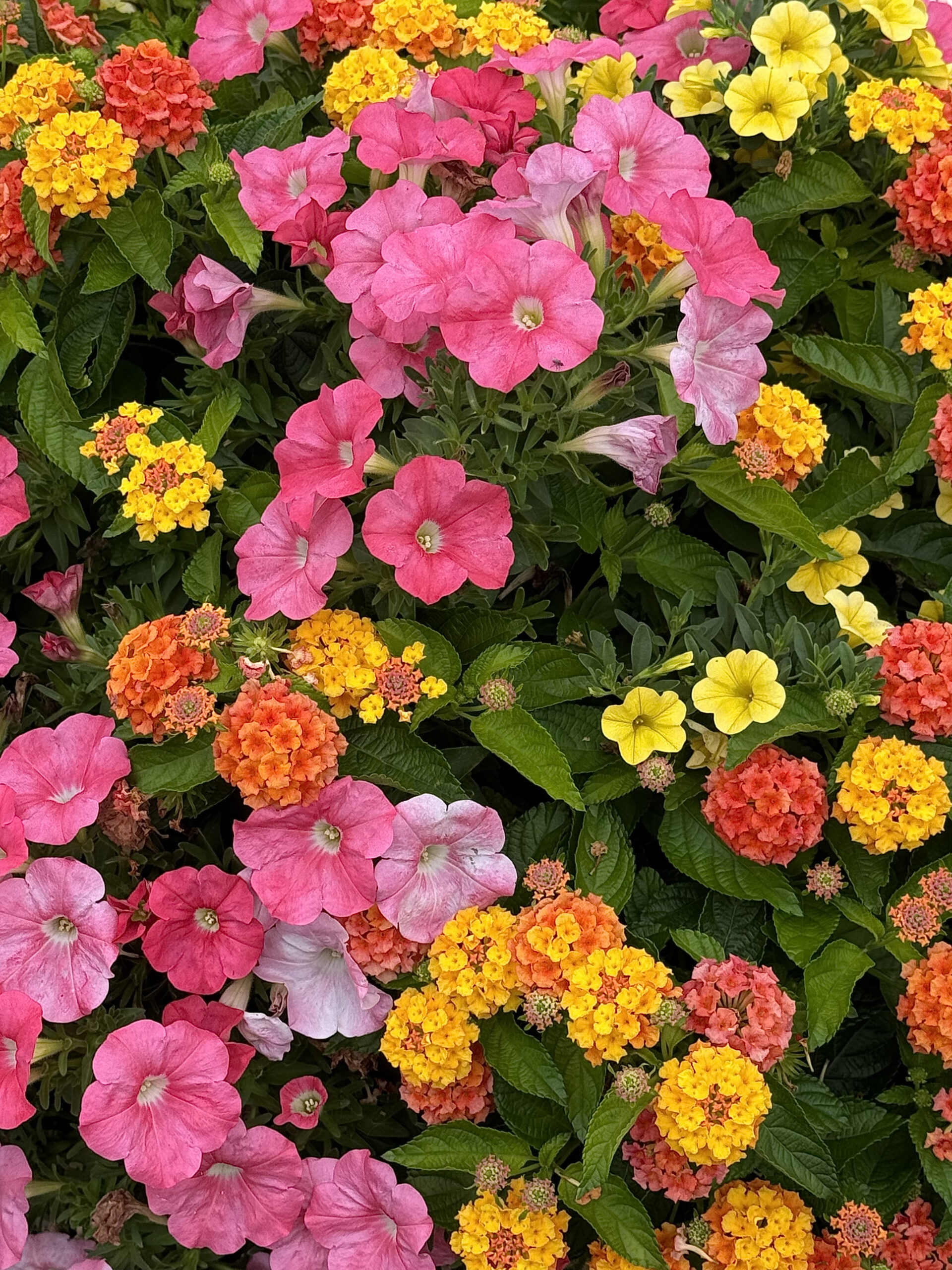
Perfect Container Companion
By Norman Winter | Horticulturist Author and Speaker
After seeing the flowers at the Young’s Plant Farm Annual Garden Tour in Auburn AL I felt a sense of desperation to get my hands on the Luscious Basket Tangeglow lantana. I don’t always think about lantana being a component plant in mixed-container designs but they had several that were simply dazzling.
Luscious Basket Tangeglow is a fairly new lantana and its name gives reference to its compact nature of 12 to 26 inches in height and a spread of 12 to 24 inches. You might wonder about the differences in height and width and that is attributed to the length of the growing season.
Luscious Basket Tangeglow has done great in university trials winning Perfect Score at University of Minnesota, Iowa State, Oklahoma State and University of Tennessee. Then it took home Directors Select at Penn State and a bunch of Top Performer awards.
The Luscious Basket Tangeglow offers flowers that might at first seem like all of the other lantanas in the market with Orange and Yellow but it is the third color, peach, that makes it unique and opens the door to such artistic recipes as those seen at the Young’s Plant Farm Annual Garden Tour.
I think my favorite was a recipe called Never Lonely. I can tell from my Facebook fans this was a hit according to their responses. It features Supertunia Bermuda Beach, Superbells Yellow calibrachoa and of course the star of this column the Luscious Basket Tangeglow lantana.
The name, Never Lonely, would certainly seem appropriate from a couple of reasons. Pollinators would be ever present, and of course, friends and neighbors would always be around gawking and gasping at its beauty.
The next recipe that brought out my camera was Golden Gala. It featured Goldilocks Rocks bidens, cheerful golden daisy-like flowers. Then there was this year’s new Superbells Double Redstone calibrachoa with red petals and gold margins and of course our star Luscious Basket Tangeglow lantana.
It would not be hard for me to say the next recipe was my favorite. The color partnership takes your breath away. Oddly it was there without a name. The tag simply read Southern Combo Number 15. When I posted it to my Facebook page more than a couple asked about a particular partner.
Southern Combo Number 15 featured Superbells Cherry Red calibrachoa. Son James has grown this one on more than once but old Dad now has it on the to do list. The Cherry Red color with the Luscious Basket Tangeglow was simply dreamy. You could look at it all day.
Then there was the third partner that caused the stir within my Facebook world. It was Mezoo Trailing Red, Livingstone Daisy. It was known botanically as Dorotheanthus bellidiformis but looks to now be Aptenia cordifolia. It is the lush succulent variegated foliage that tugs at our heartstrings but you may catch sight of a red daisy-like flower. The three together make one creative combination.
Luscious Basket Tangeglow lantana is rated zone 9 and warmer as perennial and will be worth every penny as an annual. Sunlight and well drained soil are the prerequisites. The Garden Guy has been getting a spring return on all of the other Luscious varieties in zone 8 Georgia and hopefully, this will be the same with Luscious Basket Tangeglow. Follow me on Facebook @NormanWinterTheGardenGuy for more photos and garden inspiration.
-

 Attractions7 years ago
Attractions7 years ago48 Hours in Atoka Remembered
-

 Country Lifestyle1 month ago
Country Lifestyle1 month agoJuly 2017 Profile: J.W. Hart
-

 Country Lifestyle3 years ago
Country Lifestyle3 years agoThe Two Sides of Colten Jesse
-

 Outdoors7 years ago
Outdoors7 years agoGrazing Oklahoma: Honey Locust
-

 Outdoors4 years ago
Outdoors4 years agoPecan Production Information: Online Resources for Growers
-

 Equine7 years ago
Equine7 years agoUmbilical Hernia
-

 Farm & Ranch6 years ago
Farm & Ranch6 years agoHackberry (Celtis spp.)
-

 Equine4 years ago
Equine4 years agoOn the Road with Emily Miller-Beisel

